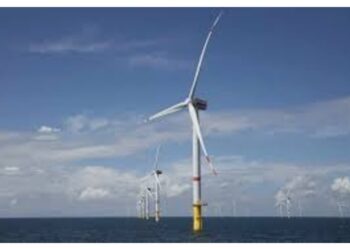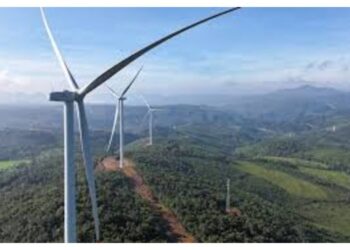The Ministry of New and Renewable Energy (MNRE) has revised the guidelines for onshore wind power micro-siting, prioritising optimised output over the minimal distance between turbines. The new guidelines aim to enhance land use efficiency in wind resource areas and support repowering and intercropping efforts. Under the new guidelines, developers can utilise advanced wind flow modeling and optimisation tools to strategically place wind turbine generators on their designated land for maximum efficiency.
The guidelines also include requirements for a minimum distance from public infrastructure and a buffer zone of 500 meters between turbines and clusters of residences, defined as at least 15 inhabited buildings, aimed at addressing noise issues. In addition, wind farm developers must adhere to a minimum distance from specific infrastructure, calculated as the turbine’s hub height plus half its rotor diameter, plus an additional five meters. This requirement applies to public roads designated by state or central governments, railway tracks, highways, buildings, public institutions, and extra-high voltage power lines. The guidelines promote a more nuanced approach to placing turbines, considering factors such as terrain conditions, wind patterns, and overall farm productivity. The guidelines require site assessment to comply with international standards set by the International Electrotechnical Commission. This includes evaluating extreme wind conditions, flow inclination, vertical wind shear, turbulence, wake effects, and terrain complexity.
Under the updated criteria, developers are required to maintain certain distances between turbines owned by different entities. Turbines positioned perpendicular to the main wind direction must be spaced 5D (five times the rotor diameter) apart, while turbines aligned with the wind direction must maintain a distance of 7D. When neighboring turbines owned by different parties have varying rotor sizes, the larger rotor’s diameter will be used to determine the 5D and 7D spacing requirements. However, if both parties consent, developers or owners of adjacent turbines can agree to reduce these distances.













